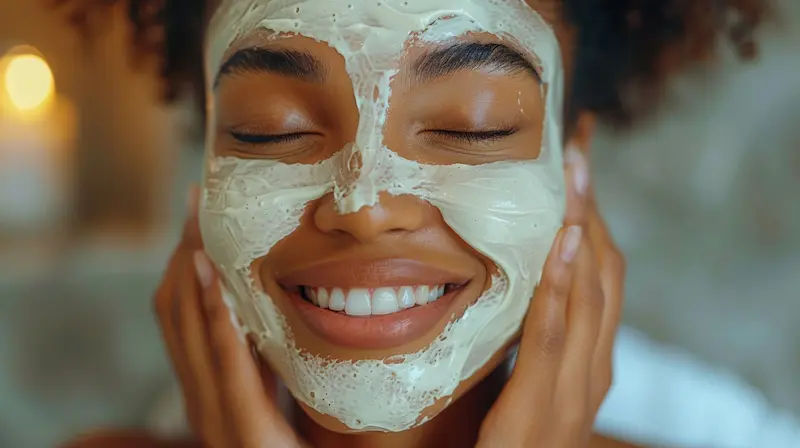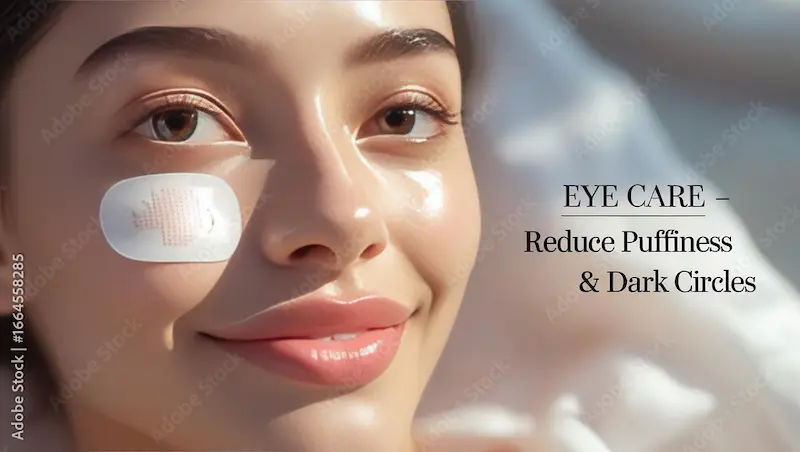Your Skin & Hair Treatment Guide: Options for Every Concern
Discover effective skin and hair treatment options for every concern, from acne and dryness to hair loss and ageing. Build a personalised plan with expert guidance.


Introduction
Navigating the world of skin and hair care can feel overwhelming. With countless products, treatments, and advice available, how do you know what's right for your unique concerns? Whether you're battling persistent acne, noticing increased hair shedding, or looking to prevent the signs of ageing, understanding your treatment options is the first step towards achieving healthier skin and hair. This comprehensive guide cuts through the noise, offering a clear roadmap to the most effective solutions available today. From simple lifestyle changes and over-the-counter products to advanced clinical procedures, we will explore the full spectrum of care. Our goal is to empower you with knowledge, so you can make informed decisions and build a personalised plan that addresses your specific needs and helps you feel confident in your own skin.
Understanding Your Skin and Hair: The Foundation of Health
Before diving into treatments, it's crucial to understand what you're treating. Your skin and hair are not just aesthetic features; they are complex organs that reflect your overall health.
The Skin's Structure: More Than Meets the Eye
Your skin has three primary layers: the epidermis (outer layer), dermis (middle layer), and hypodermis (deeper layer). The epidermis acts as a protective barrier, while the dermis contains collagen, elastin, and blood vessels that provide strength and elasticity. Common issues like acne, dryness, and ageing occur within these layers. For example, acne forms when hair follicles become clogged with oil and dead skin cells, often influenced by hormones and bacteria.
Hair Growth Cycle: Why Shedding is Normal (And When It's Not)
Hair grows in a cycle with three phases: anagen (growth phase, lasting 2-7 years), catagen (transition phase, ~2 weeks), and telogen (resting phase, ~3 months, where hair falls out). It's normal to shed 50-100 hairs daily. However, significant thinning or bald patches indicate a disruption in this cycle, often due to factors like stress, nutrition, genetics, or medical conditions. Understanding this cycle is key to diagnosing the type of hair loss and choosing the right intervention.
Navigating Common Skin Conditions and Their Treatments
Acne and Blemish-Prone Skin: From Topicals to Advanced Care
Acne is one of the most common skin conditions, affecting millions. Treatment depends on severity.
Over-the-Counter (OTC) Solutions: Look for products containing Salicylic Acid (unclogs pores) or Benzoyl Peroxide (kills bacteria). These are effective for mild, occasional breakouts.
Prescription-Strength Treatments: For moderate to severe acne, a dermatologist may prescribe topical Retinoids (like tretinoin) to accelerate cell turnover or oral antibiotics to reduce inflammation and bacteria. For persistent hormonal acne, medications like spironolactone can be highly effective.
Professional Procedures: Dermatologists offer in-office treatments like chemical peels, laser therapy, and corticosteroid injections for large cysts. These can reduce active breakouts and improve the appearance of acne scars.
Dryness, Eczema, and Psoriasis: Soothing the Barrier
These conditions are linked to a compromised skin barrier and inflammation.
Treatment: The cornerstone is consistent moisturising with creams containing ceramides, hyaluronic acid, or glycerin. For eczema and psoriasis, topical corticosteroids are often prescribed to reduce flare-ups. Newer biologic drugs have revolutionised treatment for severe psoriasis. Identifying and avoiding triggers (like certain fabrics, soaps, or foods) is also critical. If over-the-counter moisturisers don't control your eczema symptoms, consulting a doctor online with Apollo24|7 can help you get a targeted prescription.
Health topic carousel:
Doctor's speciality: Dermatology
Text: Consult an Dermatologist for Personalised Advice
Anti-Ageing and Sun Damage: Prevention and Reversal
Sun protection is the single most effective anti-ageing strategy. Beyond daily broad-spectrum SPF 30+:
Topicals: Vitamin C serums (antioxidant), Retinoids (gold standard for boosting collagen and reducing wrinkles), and Peptides (support skin structure).
Procedures: Procedures like laser skin resurfacing, chemical peels, and microneedling can dramatically improve skin texture, tone, and fine lines by encouraging the skin to heal itself and produce new collagen.
Addressing Hair and Scalp Concerns Effectively
Hair Loss (Alopecia): Uncovering the Root Cause
Treatment is entirely dependent on the diagnosis.
Androgenetic Alopecia (Pattern Hair Loss): The most common type. FDA-approved treatments include topical Minoxidil (Rogaine), which prolongs the growth phase, and oral Finasteride (Propecia, for men), which blocks a hormone that shrinks follicles.
Telogen Effluvium (Temporary Shedding): Often triggered by stress, illness, or nutrient deficiency. Treatment focuses on addressing the underlying trigger. Ensuring adequate iron, vitamin D, and protein intake is vital. Apollo24|7 offers convenient home collection for tests like vitamin D or HbA1c to check for underlying issues.
Dandruff and Scalp Psoriasis: Finding Relief
Flakes and itchiness are common. Dandruff is often caused by a yeast called Malassezia and is treated with anti-fungal shampoos (containing ketoconazole, zinc pyrithione, or selenium sulfide). Scalp psoriasis, characterised by thick, scaly plaques, may require medicated shampoos, topical steroids, or even systemic treatments for severe cases.
Damaged and Brittle Hair: Repair and Restoration Strategies
Damage from heat, chemicals, and environment leads to breakage. Focus on prevention: reduce heat styling, use a heat protectant, and get regular trims. Deep conditioning treatments and protein masks can help temporarily mend the hair shaft. Internally, a diet rich in omega-3s, biotin, and antioxidants supports hair strength.
The Power of Professional Dermatological Treatments
For concerns that don't respond to at-home care, dermatologists offer a range of advanced options.
Laser and Light-Based Therapies: Lasers can target blood vessels (for rosacea), pigment (for sun spots), and hair follicles (for permanent hair reduction). LED light therapy can reduce acne-causing bacteria and inflammation.
Chemical Peels and Microdermabrasion: These procedures exfoliate the outer layers of skin, improving texture, tone, and clarity. They range from mild (giving a "glow") to deep (addressing significant sun damage).
Platelet-Rich Plasma (PRP) for Hair Regrowth: This innovative treatment involves drawing a small amount of your blood, processing it to concentrate the platelets, and injecting it into the scalp. The growth factors in platelets are thought to stimulate dormant hair follicles, promoting new growth.
Holistic and Natural Approaches to Consider
While not a replacement for medical treatment, a holistic approach can support skin and hair health. A balanced diet rich in vitamins, minerals, and antioxidants is fundamental. Managing stress through yoga, meditation, or exercise can positively impact conditions like acne and telogen effluvium. Always discuss supplements like biotin or collagen with a doctor, as they can interact with medications.
Building Your Personalised Treatment Plan
There is no one-size-fits-all solution. Your plan should be based on your specific condition, severity, skin/hair type, and lifestyle.
When to See a Dermatologist
It's time to seek professional help if:
OTC products aren't working after 2-3 months.
Your condition is causing pain, severe discomfort, or emotional distress.
You notice sudden or severe hair loss.
You have a mole that is changing in size, shape, or colour.
A dermatologist can provide an accurate diagnosis and create a tailored treatment plan. If your condition does not improve after trying these methods, book a physical visit to a doctor with Apollo24|7 to get expert care.
Conclusion
Your journey to healthier skin and hair is a personal one, filled with a variety of paths you can take. From understanding the basic biology of your skin and hair to exploring the vast range of treatment options—from gentle at-home remedies to cutting-edge clinical procedures—you now have the knowledge to navigate this landscape with confidence. Remember, what works for one person may not work for another, so patience and consistency are your greatest allies. Start by addressing your primary concern, introduce new products or treatments one at a time, and don't hesitate to seek professional guidance. By taking an informed and proactive approach, you can develop an effective treatment plan that helps you look and feel your best.
FAQs
What is the first thing I should try for mild acne?
Start with an over-the-counter face wash or spot treatment containing salicylic acid or benzoyl peroxide (2.5-5%). Use it consistently for at least 6-8 weeks, and ensure you follow a gentle skincare routine that doesn't strip your skin of its natural oils.
Are natural remedies like coconut oil effective for hair growth?
While coconut oil can be an excellent moisturiser and may help reduce protein loss in hair when used as a pre-wash treatment, there is limited scientific evidence that it directly stimulates new hair growth. It is more beneficial for managing dryness and damage.
How often should I get a professional facial or treatment?
This depends entirely on your skin's needs and the type of treatment. For maintenance facials, every 4-6 weeks is common. For more intensive treatments like chemical peels or lasers, the frequency can range from every 2 weeks to once a year, as advised by your dermatologist.
Can stress really cause hair loss?
Absolutely. A significant stressful event can trigger a condition called telogen effluvium, pushing a large number of hair follicles into the shedding (telogen) phase at once. This leads to diffuse thinning, usually noticed 2-3 months after the stressful incident. The good news is that it's often temporary.
What is the difference between dry skin and dehydrated skin?
Dry skin is a skin type characterised by a lack of oil (sebum). Dehydrated skin is a condition where there's a lack of water in the skin. Oily skin can be dehydrated. Dry skin needs moisturisers with oils and ceramides, while dehydrated skin needs ingredients that are humectants like hyaluronic acid and glycerin to draw in water.
Health topic carousel:
Doctor's speciality: Dermatology
Text: Consult a Dermatologist for Personalised Advice




